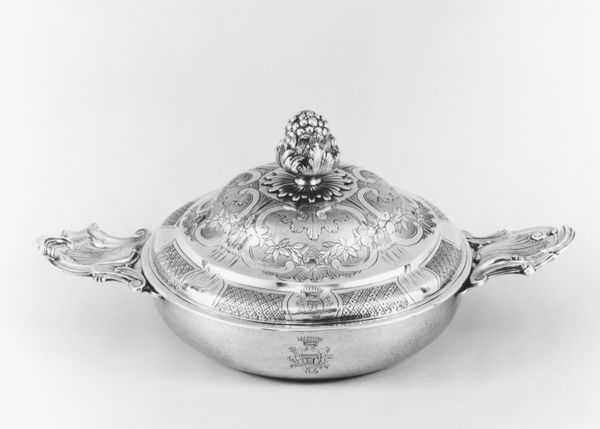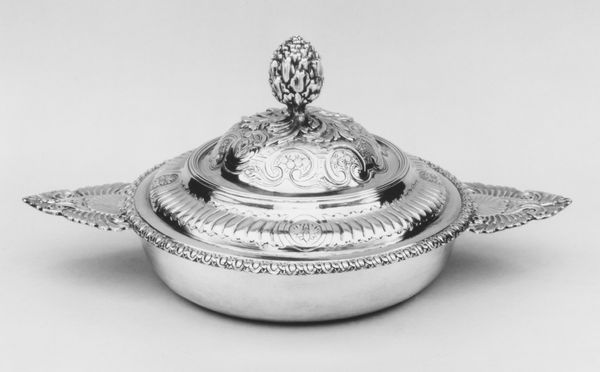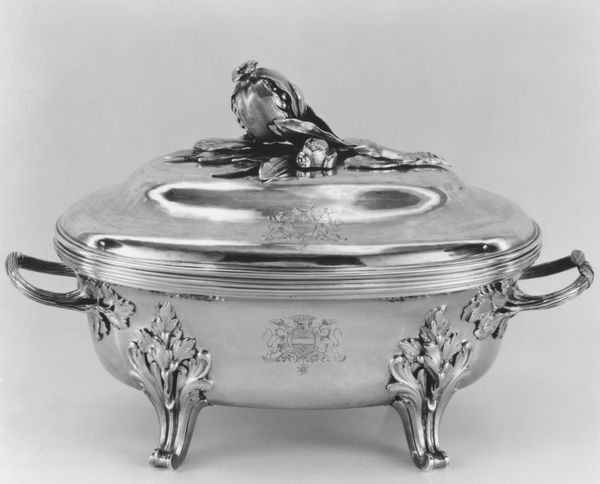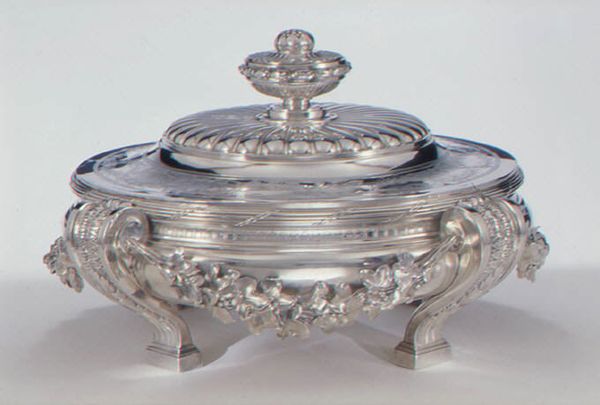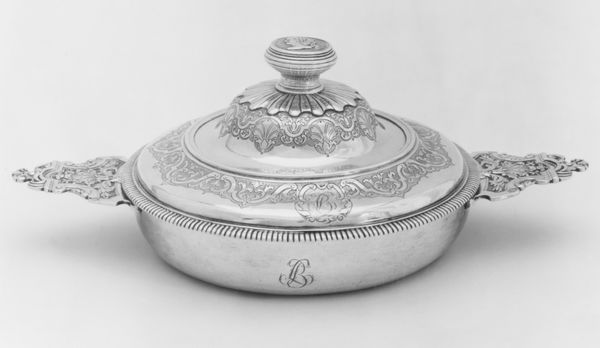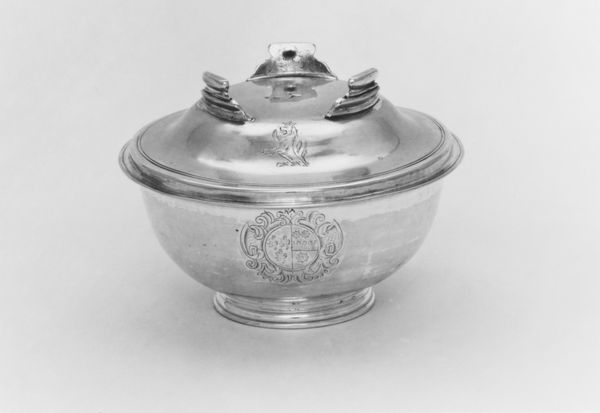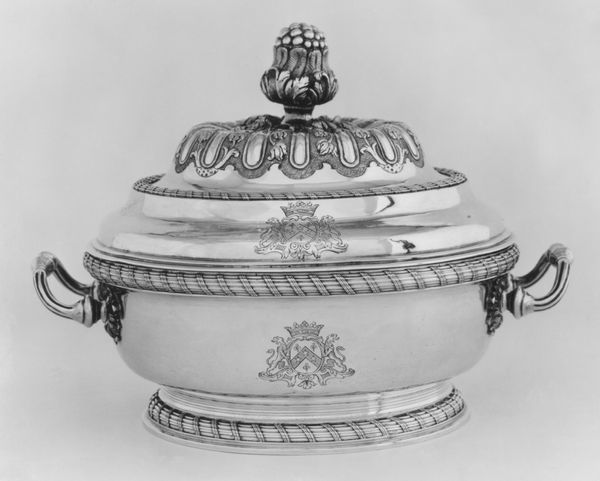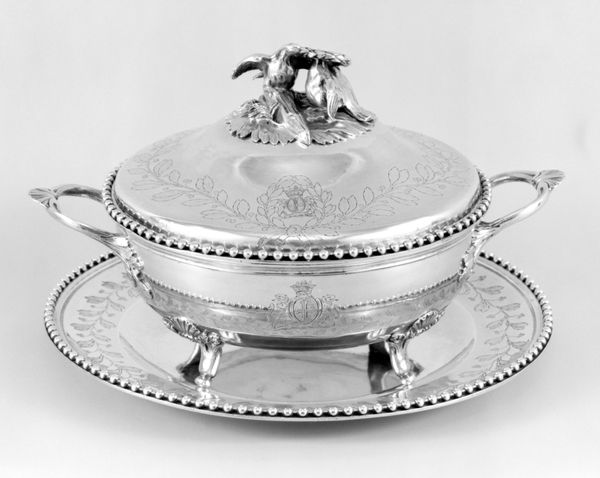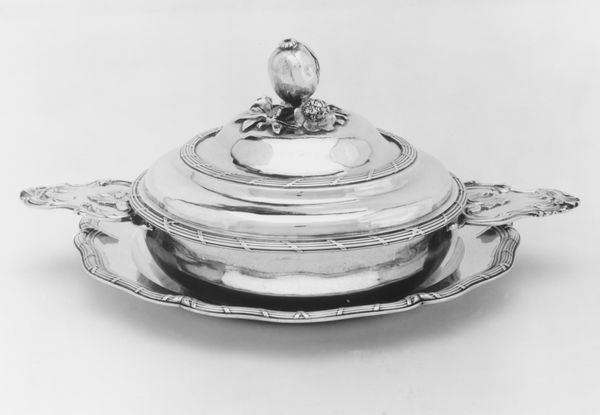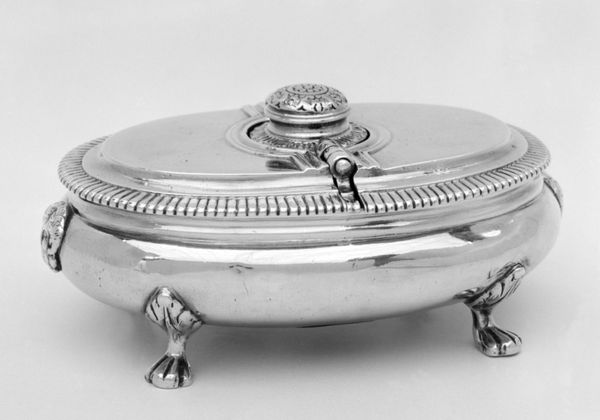
Broth bowl with cover and stand (part of a traveling set) 1768
0:00
0:00
silver, sculpture
#
silver
#
sculpture
#
decorative-art
#
rococo
Dimensions: Overall (porringer with cover (.1a, b), including handles): 5 7/8 × 12 3/8 in. (14.9 × 31.4 cm); Diameter (plate (.2)): 10 3/8 in. (26.4 cm)
Copyright: Public Domain
Curator: Oh, it's undeniably elegant. The silver practically shimmers. Editor: True, the texture catches light beautifully, although there is something inherently excessive about this kind of adornment. Curator: I understand the sentiment, but perhaps "excessive" is merely a reflection of its time. This is a "Broth bowl with cover and stand," part of a travelling set crafted by Louis Imlin III the Younger in 1768. A quintessential example of Rococo decorative art now housed at the Metropolitan Museum. Editor: Rococo, alright. The eye is immediately drawn to the acanthus leaves and that sculpted artichoke on top! Form over function, wouldn't you say? All those curves and flourishes. It definitely feels… theatrical. Curator: The artichoke speaks volumes though! Consider its symbolism throughout history— fertility, abundance, hope... A sign of privilege, surely. It says, "I am wealthy, secure, and prepared to share this bounty.” Think of what that imagery would mean to the original owner on the road. It declares, ‘luxury can travel.’ Editor: But does that declaration need so many swirling tendrils etched into the surface? From a structuralist standpoint, I appreciate how all the elements play into each other, reflecting and reiterating motifs... however it feels more of a status symbol than a truly moving work. Curator: Indeed, such bowls held warm, comforting broths— nourishment on long journeys, or relief during times of sickness, symbolizing care and connection when far from home. Beyond mere wealth, these are cultural narratives, emblems of stability in transit. Editor: I suppose I can grant it that. This era saw utilitarian items elevated to artworks through detailed construction and historical allusion. Its value comes, as much, from the craft that is in effect, sculpting a memory for a family, as much as holding liquid nourishment for someone travelling far from home. Curator: Precisely. We often dismiss the decorative arts as mere ornamentation, failing to recognize their symbolic language— how they encode histories, social roles, and cherished hopes. It transforms something functional to being representative of familial values, and historical context. Editor: Well, you've certainly given me something to chew on, more than just a bowl of broth. Curator: Always a pleasure to connect these historical threads. There's real comfort in identifying what matters between each other.
Comments
No comments
Be the first to comment and join the conversation on the ultimate creative platform.
